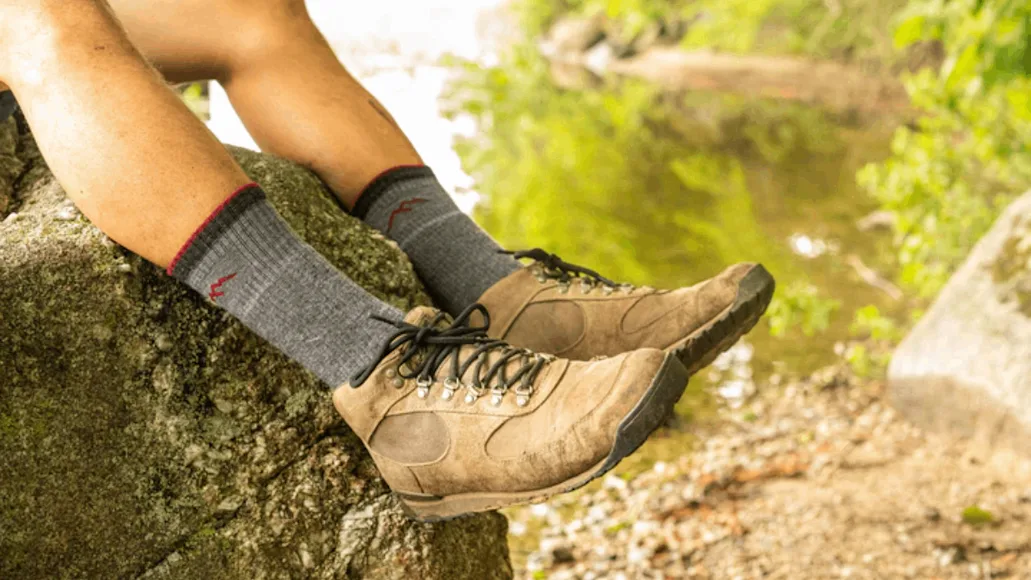_We may earn revenue from the products available on this page and participate in affiliate programs. Learn more ›
_
Best Overall
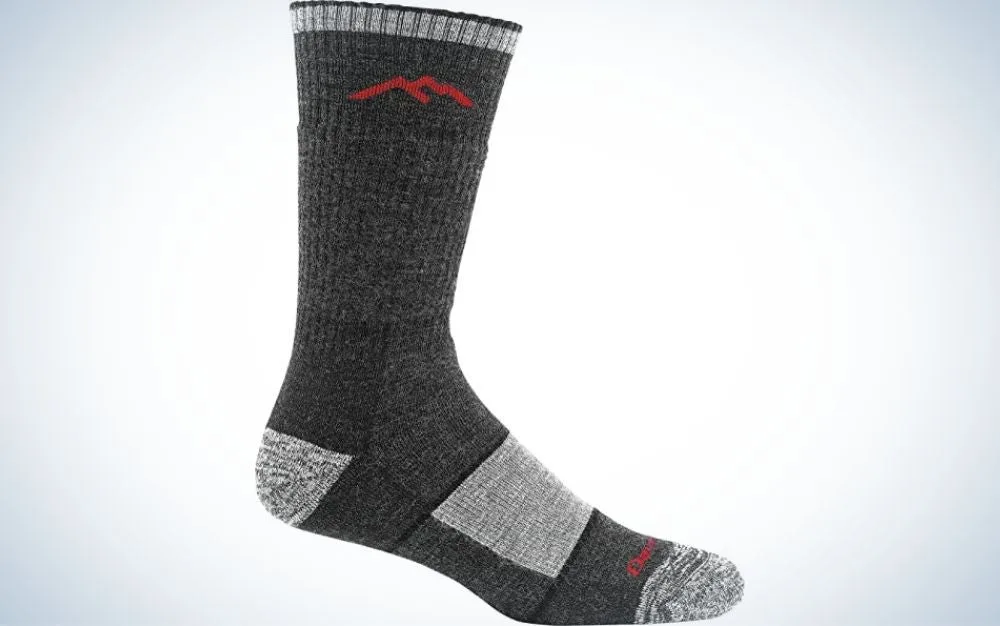
Darn Tough Merino Wool Boot Sock Full Cushion
LEARN MORE
Summary
The Darn Tough Merino Wool Full Cushion socks are our top pick for the best hiking socks and wool socks for their durability and versatility through the seasons and activities.
Best for Hiking
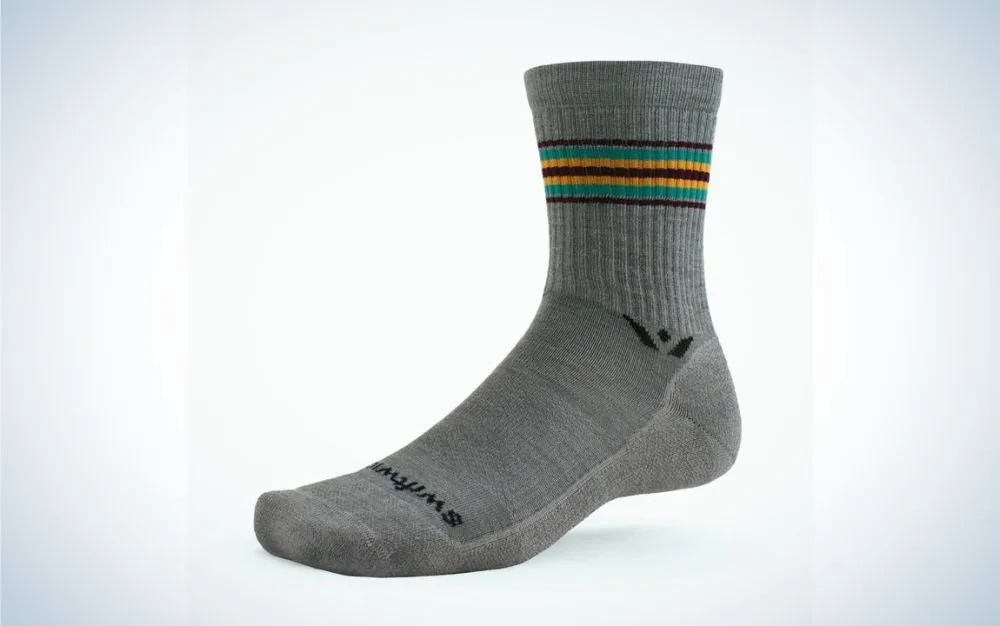
Swiftwick Pursuit Hike Lightweight
LEARN MORE
Summary
These lightweight socks are available in various weight options, making them a customizable and year-round hiking sock.
Best for Winter
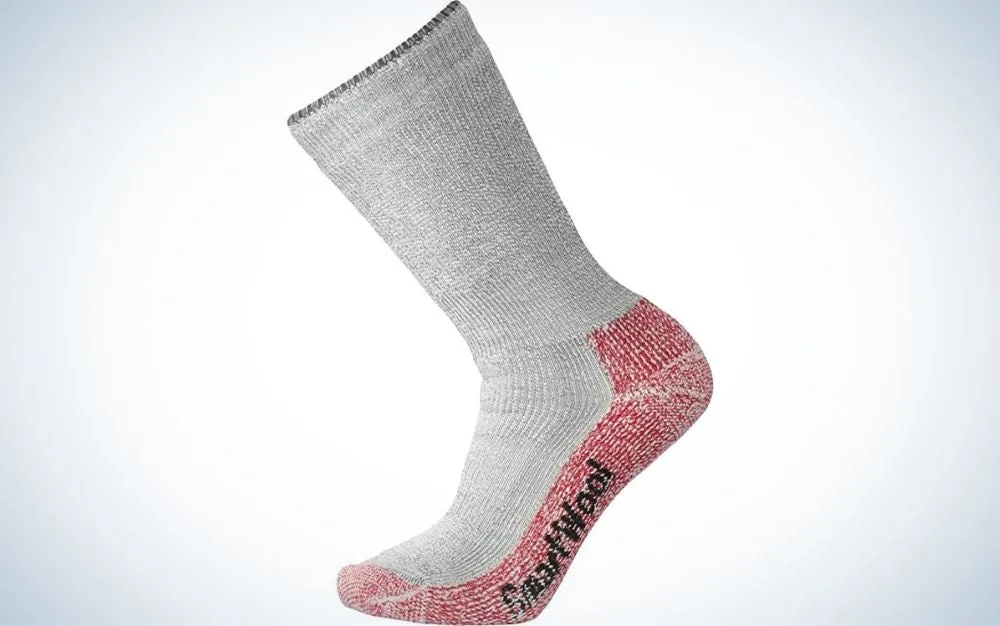
Smartwool Mountaineer Extra Cushion Crew Socks
LEARN MORE
Summary
Smartwool Mountaineer Extra Cushion Crew socks do more than keep your feet warm in cold temperatures with their moisture channeling comfort and snug fit.
Wool socks are excellent for daily wear and outdoor sports like hiking and hunting. Wool is naturally antimicrobial and is one of the best insulators for cold, wet conditions. Unlike fully synthetic socks, wool socks also continue to insulate even when wet.
While the standard qualities of wool are always a plus, most of us are also seeking socks that we can use for years to come. Because all products have an expiration date, we have to consider durability along with repairability or, at the very least, a company with a lifetime guarantee. To help you find socks for all of your outdoor needs, we’ve rounded up and reviewed some of the best wool socks on the market.
Best Overall: Darn Tough Merino Wool Boot Sock Full Cushion
Best for Hiking: Swiftwick Pursuit Hike Lightweight
Best for Winter: Smartwool Mountaineer Extra Cushion Crew Socks
Best for Running: Icebreaker Merino Multisport Light Micro Socks
Best Budget: KAVANYISO Thermal Merino Wool Hiking Socks
How We Picked The Best Wool Socks
Having the appropriate socks for your outdoor needs should be a priority. Wool socks are a classic backpacking choice, and all of the socks on our list are excellent options. Knowing your personal preferences and wearing socks that fit the intended use is a perfect way to find the best wool socks for you.
To help narrow down the list, we used the buying considerations discussed above with a specific focus on a few areas.
Durability: How long will these socks last? Look at high-wear areas to see if they are reinforced. Ensure that the materials are long-lasting and made from materials that can stand up to long hours on the trail. No sock will last forever, so find companies that have repair or replacement policies.
Comfort: Finding socks that fit the intended use is one of the best ways to ensure a comfortable fit. Beyond that, look for socks that fit your feet, shoes, and climate. The sock thickness should be appropriate for the time of year and dry quickly. When wearing them for long hikes, choose socks that are proven to prevent hotspots and blisters.
Care: Wool is a material that can easily be ruined with improper care. Always follow manufacturer guidelines when washing or mending wool socks. Look for socks you can toss in the wash with the rest of your clothes for convenience. Other wool socks are not hard to care for but should be washed in cold water and air dried for best results.
We also considered factors such as personal experience with brands and sock styles, verified customer reviews, and company-specific research.
Best Wool Socks: Reviews & Recommendations
Best Overall: Darn Tough Merino Wool Boot Sock Full Cushion
Best Overall

Specs
Length: Crew cut / high calf
Materials: 66% merino wool, 32% nylon, 2% lycra spandex
Thickness: Medium / midweight
Pros
Lifetime warranty
Comfortable, snug fit
Great for all day wear
Does not create pressure/hot spots
Cons
Length and thickness may not be favorable in hot weather
Honestly, any pair of Darn Tough socks could be the best overall socks for outdoor use. These socks tend to last forever, and even when they don’t, they have a lifetime warranty, making them well worth the price. If you are someone that likes to wear just one to two pairs of socks on a hiking trip, these are the socks for you.
Because the Merino Wool Boot Sock Full Cushion socks are relatively thick, they work well for shoulder seasons and cooler weather. If you are hiking in hot weather, they may be too thick for your needs, but we find this specific sock is one of the more versatile options.
The crew cut is closer to a mid/high calf cut, which we like. Having socks well above the ankle prevents any risk of rubbing from hiking boots
and protects from plants or insects on the trail. The blended materials give the merino wool more durability. A higher percentage of wool also gives the socks better temperature regulation and odor reduction properties.
Best for Hiking: Swiftwick Pursuit Hike Lightweight
Best for Hiking

Specs
Length: Crew
Materials: 63% merino wool, 18% nylon, 15% olefin, 4% spandex
Thickness: Medium / midweight
Pros
Made in the USA
Optimal moisture control
Seamless
Slip-resistant design
Cons
Can be damaged or shrink with improper care/washing
Swiftwick is a brand we reviewed for the best hiking socks
, featuring their Flite XT Trail socks as the most supportive sock option. While those are fantastic hiking socks, the Swiftwick Pursuit Hike Lightweight has a higher wool percentage and seems slightly more versatile, putting them on our radar for the best wool hiking sock.
You can customize the color, thickness, and cushioning so you can make these socks work for all your hiking needs. They are incredibly comfortable in all different hiking shoes, from trail runners to hiking boots with ankle support. The Y-shaped heel and the seamless toe box prevent friction while walking and reduce the risk of your sock slipping or bunching, even on inclines or declines.
The durability seems to be quite good, and Swiftwick offers a lifetime warranty. Repairs and replacements of products are available at the company’s discretion depending on the reason.
Best for Winter: Smartwool Mountaineer Extra Cushion Crew Socks
Best for Winter

Specs
Length: Crew
Materials: 68% merino wool, 30% nylon, 2% elastane
Thickness: Extra cushion
Pros
Ideal moisture management
Thick cushion for warmth and comfort
Itch- and odor-resistant
Snug fit for less friction while walking
Cons
Can feel too tight depending on your foot shape
Having thick warm socks
is only one part of the equation for winter hiking or other outdoor activities like chores. Wool socks are an excellent choice for any cold weather expedition, but finding ones that have a snug fit to keep your feet warm, dry, and blister-free is ideal.
The Smartwool Mountaineer Extra Cushion Crew socks have a thick cushion to keep you comfortable if you are on your feet all day while providing the warmth necessary for winter expeditions. The fit of the socks is sometimes described as too tight by some wearers but is preferred by others. They use a 4-degree elite fit system with a performance flex zone to optimize moisture control and prevent the sock from slipping too much as you walk. To further prevent hot spots from forming, the toe box is seamless.
They can feel a bit expensive to some buyers, but the durable and functional design is worth it if you need a trustworthy winter sock.
Best for Running: Icebreaker Merino Multisport Light Micro Socks
Best for Running

Specs
Length: No-show
Materials: 63% merino wool, 35% polyamide, 2% elastane
Thickness: Lightweight
Pros
Odor-resistant
Lifetime guarantee
Excellent for running in warm climates
Long lasting
Cons
Sizing can either be too loose or too tight
Only suitable for warm weather
Icebreaker Merino Multisport Light Micro Socks are worth considering if you are looking for a sock that will last you for years of use as you rack up long trail running hours. Icebreaker has a long-standing commitment to sustainable designs for people and the planet and its socks have a high wool percentage with just enough added durability.
The lifetime guarantee puts a lot of trust in its products and ensures that if a customer has a pair of socks worn out, they are replaced with a new pair. The lightweight no-show design is nice for warm weather runs, and the socks don’t bunch up or slide down as you move.
While these socks feel great and are functional for a variety of outdoor activities, getting the size right can be a bit tricky. Depending on your shoe size and foot shape, it can be hard to get a good fit, making the socks either too loose or too tight. Overall, these are a comfortable and durable pair of socks; just make sure you find the right fit for the best results.
Best Budget: KAVANYISO Thermal Merino Wool Hiking Socks
Best Budget
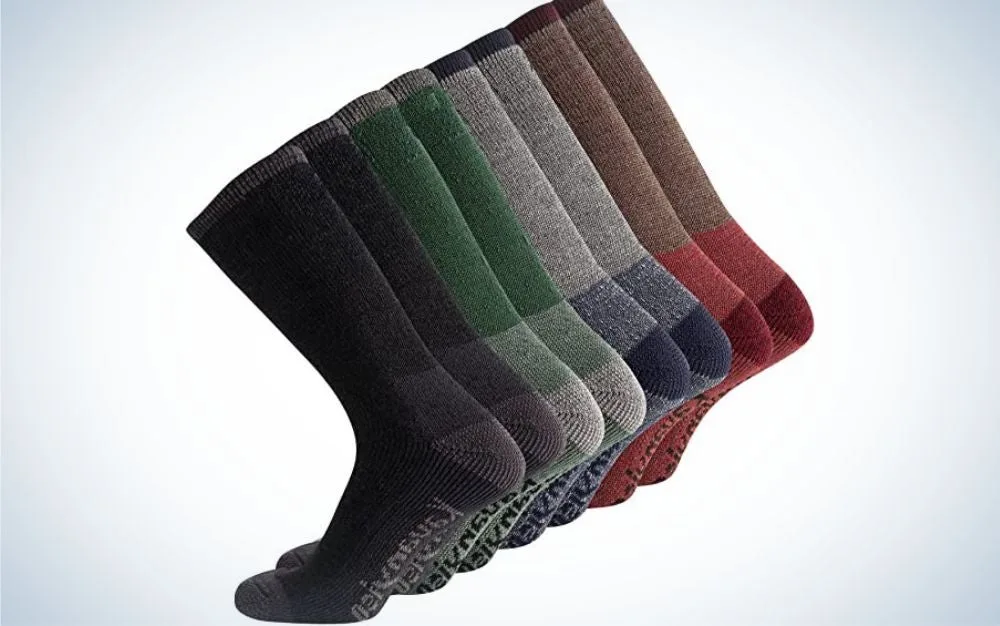
Specs
Length: Crew
Materials: Merino wool, nylon, spandex
Thickness: Heavy
Pros
Affordable price
Overall comfort is good
Good for cold weather
Dries very fast
Cons
Material percentages not provided
Not as durable as other options
Too loose fitting for long hikes
If price is your primary concern, the KAVANYISO Thermal Merino Wool Hiking socks are a decent option. These socks do not list the material percentage, but from their drying and insulating abilities, they seem to use a decent amount of wool. They are very soft with a somewhat loose fit, which makes them difficult to wear for long hikes.
The durability is pretty good for the price, especially if you plan to wear them around the house or for general wear. These socks are prone to rubbing and friction, causing hot spots, and may not be the best option for hiking or outdoor activities.
In terms of value, you are getting a good deal. These are better quality than the standard cheap pack of cotton socks and will provide more warmth and comfort throughout the cold seasons. If you want an excellent hiking sock, however, these aren’t the best pick.
What to Consider When Choosing Wool Socks
Keeping your feet warm, happy, and hot spot-free is easy with the right socks and pair of shoes. If you’re a die-hard wool sock fan like me, consider a few things before buying your next pair. Not all wool socks are created equal, and depending on your intended use and personal preferences, the best wool socks for you will be different than the best pair for me.
Intended Use
Do you need a new pair of socks for trail running or hiking?
Do you need wool socks that insulate through harsh winter conditions?
Do you need comfortable and versatile socks to be worn both on and off the trail?
Identifying when and how you want to wear wool socks helps you choose the right ones for your specific needs. While, in theory, you could use the same pair of socks for winter outdoor chores and summer trail runs, your feet will either be too hot or too cold at some point.
Think about the primary season of use, frequency of wear, and the style/fit you prefer in socks for that activity, and then move on to the other considerations.
Materials
Most wool hiking socks are not made from 100% wool. On average, they seem to be made from around 45% wool materials; the rest is a synthetic or similar material to help improve the durability or elasticity of the fabric.
Having a sock made from a blend that’s at least 45% wool provides the sock with enough insulation and antimicrobial properties while helping them last much longer. The only downside of blending materials is that it is harder to recycle or compost them when the sock is no longer viable for wear.
Merino wool is the most commonly used wool option for socks, especially hiking or running socks. It is lighter and comfortable and still provides natural temperature regulation, reduces odors, and stays dry.
Always look at the material percentages when buying socks to ensure they contain enough wool to be effective. If possible, look for materials like Sonora fibers (a natural alternative to spandex) or recycled nylon/polyester. There currently are not many natural fibers comparable to nylon on the market, but post-consumer recycled nylon does exist.
A lesser-known alternative to Merino wool is Alpaca wool. When made correctly, Alpaca wool has similar properties to Merino wool, but these products are hard to find and expensive.
Style
Sock style is usually referring to the sock length, but it could also be considered the sock design/pattern. For this article, we use sock length and sock style interchangeably.
There are four main hiking sock styles:
No-show socks: This classic low-cut style has fabric that covers the same area as your shoe. Hikers and trail runners sometimes use no-show socks, but they are not an overly popular design because they do not protect the shoe or the ankle. These socks are also prone to bunching or sliding down, causing irritation and hot spots in some instances. Since many hiking boots have ankle support, no-show socks are not very popular. They can comfortably be worn with regular trainers or trail runners but should have a snug fit to prevent blisters and irritation.
Ankle/quarter socks: Offering more protection than a no-show sock, ankle or quarter socks extend just above the ankle. These are an excellent option if you like the lower profile of a no-show but want slightly more protection and a lower risk of sliding down or bunching up. These are popular for summer hiking and trail running and wear well in low or mid-cut hiking boots.
Crew socks: Crew-cut socks sit anywhere from 6 to 8 inches above the heel and are the classic hiking sock length. The taller sock provides more coverage and works well with various hiking shoes
/boots, especially those with ankle support. When hiking in areas with brush or tall grasses, crew socks offer more protection from plants or insects (like ticks). Even with the extra coverage, when made from suitable materials, crew socks can be very comfortable for warm weather hiking.
Knee-high socks: A less common option, knee-high socks are an excellent choice for taller boots and colder weather. When you need extra coverage, knee-high socks help provide more insulation and protect your legs from any irritation from tall boots.
Other sock styles are available, and these sock lengths may be listed under different names.
Durability
Wool socks can be very durable, but that usually requires mixing them with some percentage of synthetic materials. Merino wool, in particular, is a very soft fiber, making it extremely comfortable for clothing, especially against your skin. However, on its own, it does not stand up well to abrasive materials and can quickly develop holes in high-wear areas.
Look for socks backed by a company guarantee or at the very least has a repair policy. Most companies that manufacture hiking or athletic apparel know that their socks need to be durable and long-lasting, so their design and warranties should back those claims.
How you care for your socks also makes a difference. Know how to properly wash and dry wool socks to ensure the cleaning process isn’t prematurely weakening the fibers.
Comfort and Construction
Wool is well-known for the comfort it provides the wearer, and a variety of things contribute to a comfortable sock construction. With hiking socks, in particular, the sock’s thickness and padding are essential factors.
How thick a sock is generally related to how warm it is, but with Merino wool, you can get a fantastic insulating sock with a less thick fabric. For the most part, you can expect winter socks to be wider than warm weather socks. Sock thickness can also contribute to the comfort while hiking or running. For long-distance hiking or running, cushioning on the bottom of the sock or in high-wear areas can be more comfortable and reduce friction and irritation.
A sock with little cushioning is more breathable and works well in summer conditions or even as a sock liner. Sock liners are not very popular anymore, but they can be used to help prevent hot spots and improve moisture wicking away from your skin.
FAQs
Q: Is 100% Merino wool good for socks?
Merino wool is an excellent material for socks, but 100% Merino wool is very soft and not very durable. Merino wool is often mixed with another material to improve its durability. It wicks moisture away from your feet, has antibacterial properties, and can also retain heat when wet, which is perfect for hiking and hunting.
Q: What percent should wool socks be?
The percentage of wool in a sock is often tied to the intended use and level of warmth. To get the benefits of wool, look for socks made from at least 40% wool. Socks made from 60% to 75% wool are ideal for moisture-wicking, heat retaining, and antimicrobial properties.
Q: Are Merino wool socks worth it?
Yes, we firmly believe that Merino wool socks are worth it. They are soft and extremely comfortable, even on long hikes. They’re much safer than full synthetic socks since they still insulate when wet. Plus, they won’t get stinky as fast with their natural antimicrobial properties.
Q: Are wool socks better than thermal?
Wool is a popular material used to make thermal socks, but there are synthetic alternatives to wool thermal socks, which tend to be a more effective option, especially for cold and wet conditions. Wool is more likely to help your feet retain heat, keeping you more comfortable in the cold.
Q: Can you wear wool socks every day?
Yes, you can wear wool socks every day. There are a variety of wool sock designs to keep you comfortable no matter the weather or activity. The same wool socks can also be worn every day on backcountry trips. Most hikers swap socks out every 2 to 3 days, while others trek in one pair of wool socks for up to a month. Having a pair or two of wool socks on a trip is ideal so you can wear a clean pair while you wash the dirty ones.
Best Wool Socks: Final Thoughts
Best Overall: Darn Tough Merino Wool Boot Sock Full Cushion
Best for Hiking: Swiftwick Pursuit Hike Lightweight
Best for Winter: Smartwool Mountaineer Extra Cushion Crew Socks
Best for Running: Icebreaker Merino Multisport Light Micro Socks
Best Budget: KAVANYISO Thermal Merino Wool Hiking Socks
There are so many amazing options for wool socks these days. When it comes to choosing the best wool socks, it comes down to a mix of personal preference and product performance. Regardless of the intended use, wool socks should be a reliable piece of clothing you can wear for years. Get the most out of wool’s amazing natural ability to insulate and wick moisture away from your skin with one of many options on our list. Even if you didn’t find the perfect pair of socks for you, use our buying considerations to help guide the shopping experience.
Why Trust Us
For more than 125 years, Field & Stream has been providing readers with honest and authentic coverage of outdoor gear. Our writers and editors eat, sleep, and breathe the outdoors, and that passion comes through in our product reviews. You can count on F&S to keep you up to date on the best new gear. And when we write about a product—whether it’s a bass lure or a backpack—we cover the good and the bad, so you know exactly what to expect before you decide to make a purchase.

